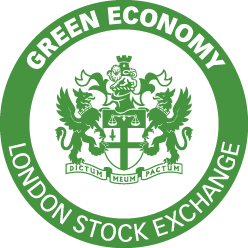Avoided emissions – an estimate of the energy saving potential of our innovative products
Employing heat recovery ventilation solutions in airtight, optimally insulated buildings, enables marked reductions in the energy used for heating or cooling. Alongside these energy reductions and correlated financial benefits, there are significant carbon emissions that are avoided when compared to alternative, base-line ventilation.
Building on the model that we designed last year in collaboration with Arup and updating for conversion factors, this year, we have calculated the avoided emissions from our heat recovery products sold in FY23, over the life-time of those products sold.
Our heat recovery products consistently reduce energy consumption throughout their useful life, thereby avoiding emissions for more than just a single year. Further, with every successive year, the sales contribute to the growing installed base, leading to cumulative emission reductions. We have however assessed only the life time emissions of heat recovery products sold in FY23.
The one year avoided emissions for FY23 have increased to 272,073tCO2e. from 223,065tCO2e in FY22, primarily a result of increased sales of larger commercial heat recovery products from our Heat recovery cell business ERI.
“As ERI products trend towards larger commercial and industrial projects the total volume of air they handle increases. As a business this creates an opportunity to provide much larger energy savings globally compared to our smaller commercial and domestic products.”
Michael Parker
Managing Director, ERI
Definition – avoided emissions
Avoided emissions are those emissions avoided from the use of Volution Group heat recovery products. when compared with alternative measures of ventilation. Avoided emissions are not included within scope 1, 2 or 3 emissions, and do not form part of reporting of total emissions or net zero targets for the Group.
Methodology
The methodology considers both domestic and non-domestic buildings, following the design standards and guidance in SAP 2012 and CIBSE Guide B2. The total heat load is a function of the fabric heat losses, heat losses due to infiltration and heat losses due to ventilation. The calculated energy savings and greenhouse gas (GHG) emissions reductions relate to the reduced heating load due to the selected MVHR product.
The calculation methodology and assumptions include:
- number of devices sold;
- device airflow rate (24 hours/ day for domestic, 14 hours/day for non-domestic);
- assumed heat recovery efficiencies;
- external temperature per country;
- relevant emissions factors for gas and electricity;
- internal setpoint temperature of 21ºC (with 12ºC setback for non-domestic);
- the energy used in using the devices;
- product performance as tested for the Ecodesign Directive; and
- average lifetime of use has been assumed as 10 years, and the electricity grid is assumed to decarbonise at a 5% per year.
Results
2,183,455 tCO2e
Avoided emissions
from the use of our heat recovery products sold in FY23 over their lifetime of use
Assumptions and uncertainties of avoided emissions
We recognise that there is not yet a universally accepted method of measuring or reporting ‘avoided emissions’ (sometimes referred to as ‘Scope 4’ emissions), and that any measure can only every be an estimate. The TCFD framework does not include avoided emissions with the reporting recommendations, and together with the assumptions and uncertainties involved in the calculations means that avoided emissions reported for FY2023 should not be considered to be at the same level of accuracy as our Group emissions reported within the TCFD section (Annual Report and Accounts 2023). However, we understand from our stakeholders that the energy saving potential of our products is useful information and is provided for that purpose.
The emissions calculated using our model should be assumed to be the upper limit of energy savings. The calculation is sensitive to the variables noted under ‘methodology’ and other limitations. Limitations include: The domestic application baseline assumes mains gas boiler heating, heat loss due to infiltration is not adjusted for wind speed, the thermal capacity and inertia has not been considered, domestic applications are modelled on detached houses and Commercial applications are modelled on open plan offices. Adjusting the model for these limitations may either raise or lower avoided emissions calculations. Sensitivities to key assumptions include: a 1% increase in the rate of electricity decarbonisation year on year reduces avoided emissions by 4.3%, lowering the internal setpoint temperature from 21ºC to 20ºC reduces avoided emissions by 8.3%, and decreasing unit lifetime use from 10 to 9 years reduces avoided emissions by 8.2%.
Volution Group MVHR product sales can deliver emissions savings of 223 ktCO2e worldwide. For comparison and scale, that is equivalent in greenhouse gas emissions to over 28,000 homes’ energy use for a year*.
* Calculated by the EPA Greenhouse gas equivalents calculator. See more here:
www.epa.gov/energy/greenhouse-gas-equivalencies-calculator#results

